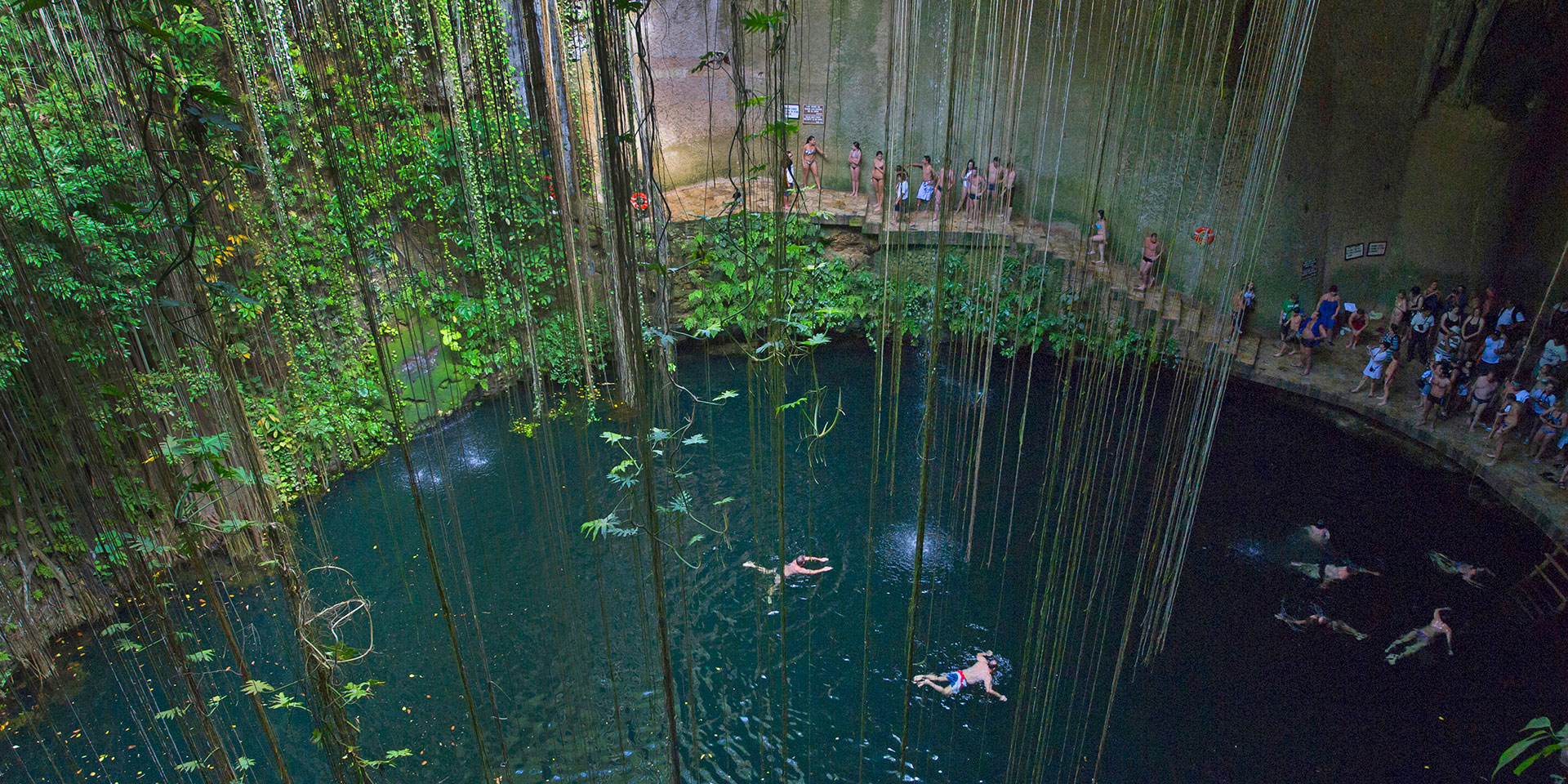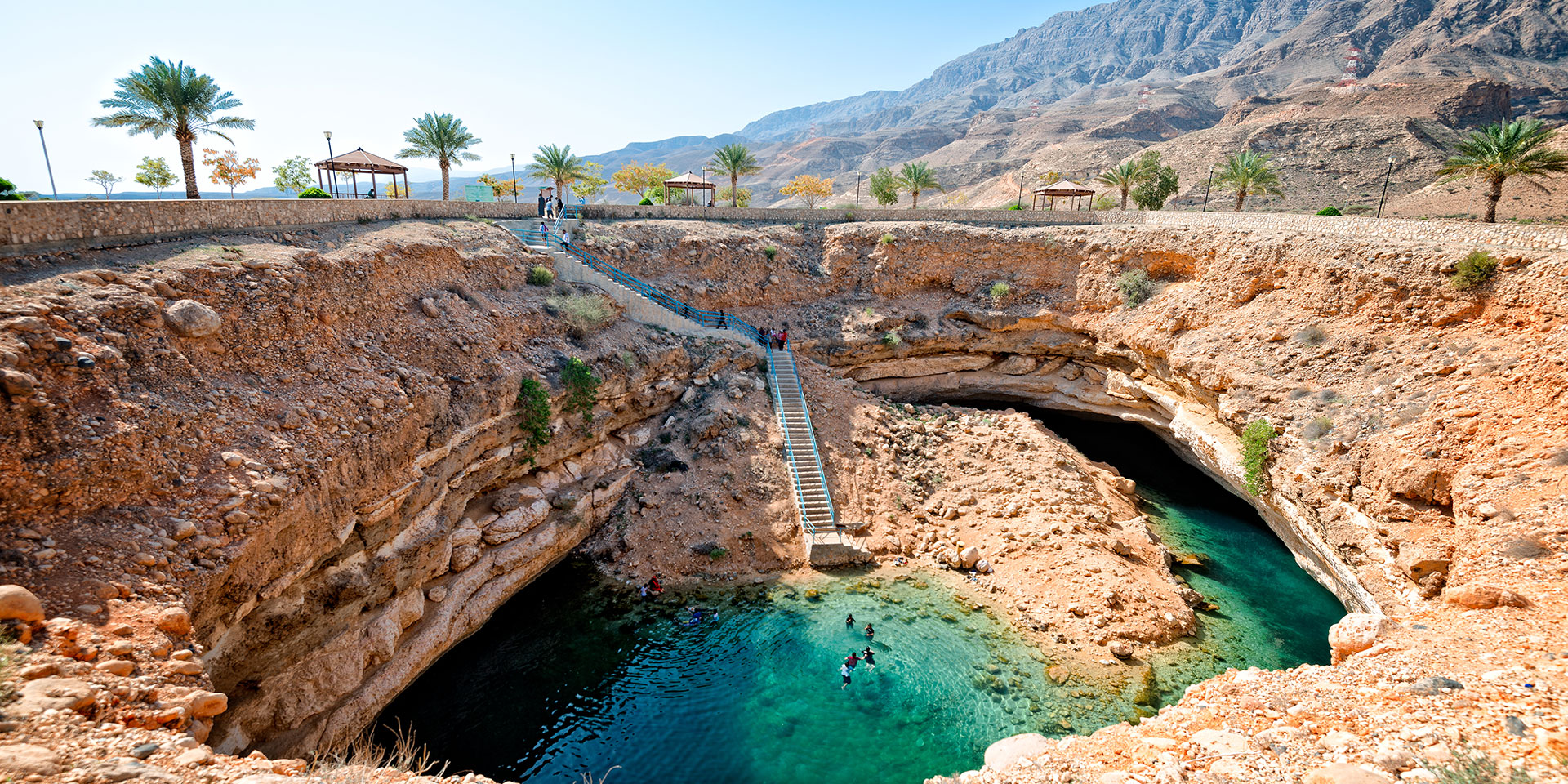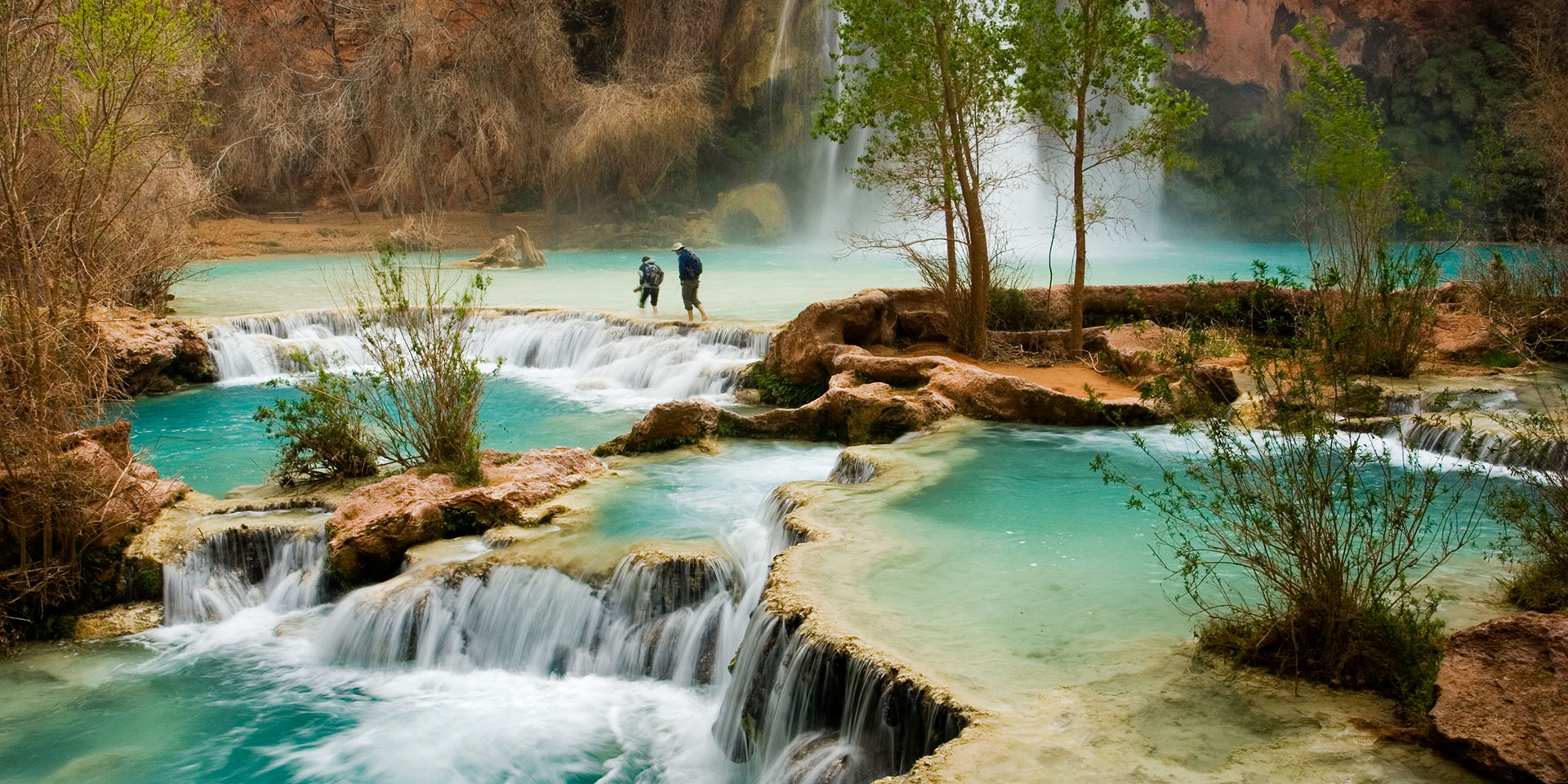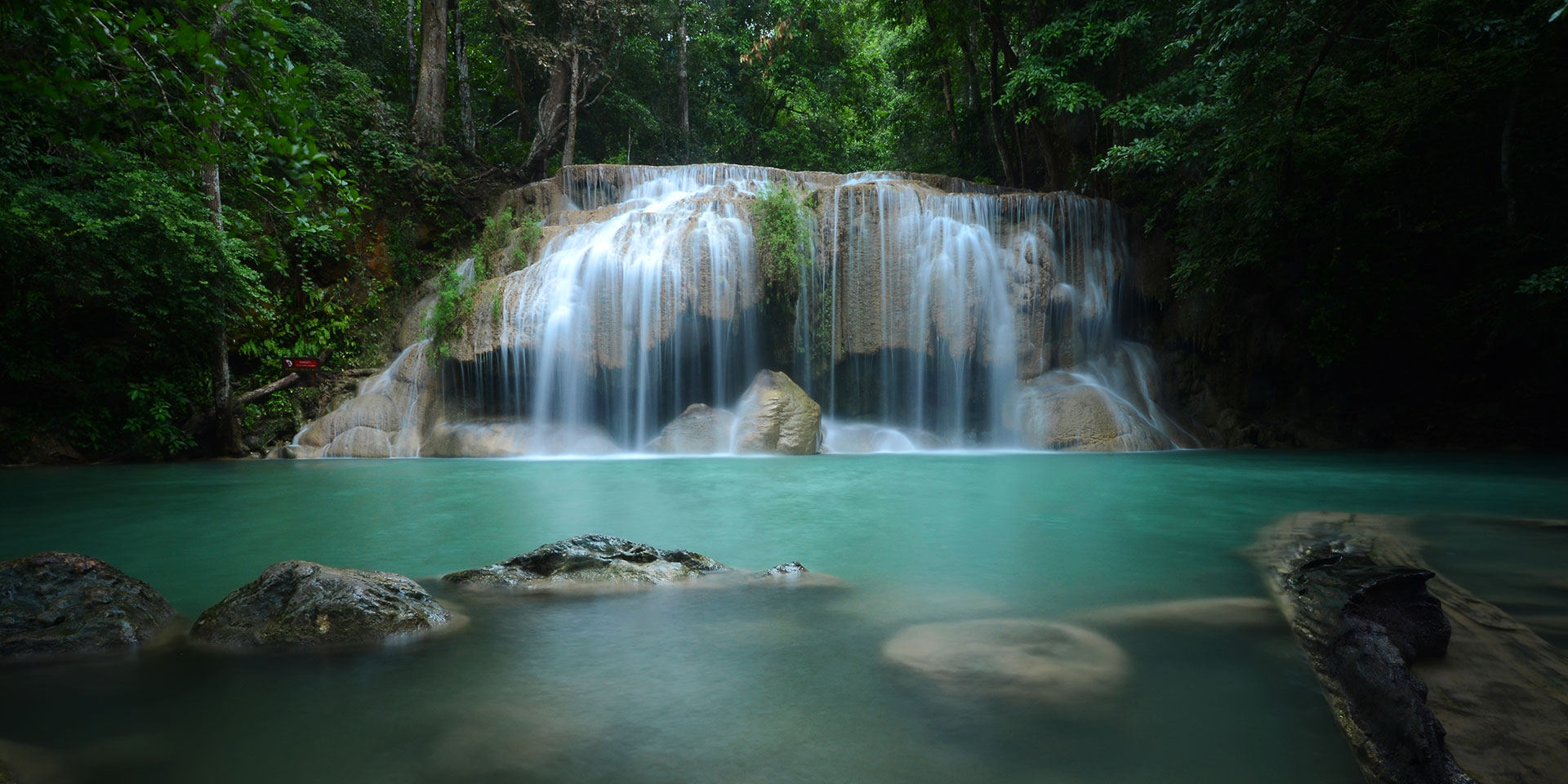When warm weather’s on the horizon, hitting up a beach is almost inevitable. But a new travel trend is emerging that’s making standard sunny shorelines yesterday’s news.
Though still more obscure, inland swimming holes across the globe are gaining a formidable following, from underground rivers in Mexico to waterfalls in Arizona and mysterious deserts between the coast of Brazil and the Amazon Rainforest.
If you’ve never thought to swim there before, you’ll now want to squeeze them into your travel bucket list.
Erawan Falls, Thailand
As is the case in Mexico, Thailand has no shortage of amazing beaches. But for a more enchanted swimming experience, travel a couple hours west of Bangkok into Kanchanaburi province, where you can hike to Erawan Falls, an adventure that’s accessible to all travelers, since the waterfalls are tiered.
The bottom fall, for example, only takes a few minutes to reach from the visitor’s center, while the third fall (Nam Tok, the elephant-shaped one from which the falls derive their name) requires about 30 minutes of semi-uphill walking.
Truly adventurous travelers can earn their privilege of cooling off by hiking more than a mile to the seventh — and highest — waterfall.
The Cenotes of Mexico’s Yucatan Peninsula

Think you can’t find a more beautiful place to swim in Mexico than the beaches of Cancun or Cozumel? Think again. The dozens of cenotes, or underground rivers, that dot Mexico’s Yucatan peninsula give the country’s best stretches of coastline a run for their money.
Both boast unbelievably clear, blue water, but the cenotes’ low light and cool cave air give them an otherworldly vibe. Naming one “best cenote” can be difficult, but popular ones include Cenote Azul, Dos Ojos and Cenote Samula.
Although you can theoretically swim independently in cenotes, descending into some of them is treacherous, which is why booking a cenote tour is a better bet.
Bimmah Sinkhole, Oman

Swimming is probably the last thing you think of when you imagine yourself on the Arabian peninsula. Yet it is within the sands of the Sultanate of Oman (you can reach it on a day trip from the capital, Muscat) that you find the Bimmah Sinkhole, a veritable oasis if there ever was one in this part of the world.
Since the turquoise waters of the sinkhole are groundwater, you needn’t time your visit here to Oman’s brief rainy season, which is what has made the rugged-walled swimming hole as popular among locals as it is among tourists.
Takaragawa Onsen, Japan
Hot springs, known as onsen, are as central to the culture of Japan as sushi or sumo, yet they might not be the first places you think of to swim in the island nation, let alone in the world. As Japanese onsens go, few showcase more stunning natural surroundings than Takaragawa Onsen.
Located in the Japanese Alps of Gunma prefecture, less than two hours from Tokyo via bullet train, Takaragawa Onsen is situated at the bottom of a wooded ravine that’s covered in heavy snow in winter and cherry blossoms in the spring.
Havasu Falls, Arizona, USA

Want to go for a swim in the middle of the desert, but don’t want to travel halfway around the world? Fly to Phoenix instead and then rent a car and drive about 4.5 hours to the trailhead of Havasupai, or Havasu Falls.
An aquamarine stream of water that looks even more electric when compared to the bright red sandstone of the Grand Canyon, Havasu Falls rewards you but requires work: With seven to eight hours of hiking each way, it’s a two-day affair at minimum — make sure to bring your own tent and camp at the base.
Lençóis Maranhenses, Brazil
The only thing stranger than finding a desertlike stretch of sand dunes tucked between two of the most humid places in the world is finding swimming holes in their midst. Yet, Lençóis Marahenses National Park is wedged between Brazil’s Atlantic Coast and the Amazon Rainforest.
During the rainy season (approximately June to September), the spaces between the dunes of this mysterious desert fill with freshwater, which takes on a crystalline hue due to the minerals in the sugar-white sand.
As you hike through the dunes with your guide (it’s possible to hire one in nearby Barreirinhas), he’ll reward your hard work with periodic swimming stops in the pools, which remain very cool in spite of the harsh heat.
Lake McKenzie, Australia
Fraser Island sits off the east coast of Australia (also an island), which might make you think the best place to swim here is an oceanfront beach.
In fact, the best place to take a dip on Fraser Island (and, perhaps, in all of Australia) is Lake McKenzie, which sits deep within the rainforest of Fraser Island, although the pictures you send back to your friends might convince them otherwise — the lake’s white sand shores and pristine waters look suspiciously like what you find seaside.




